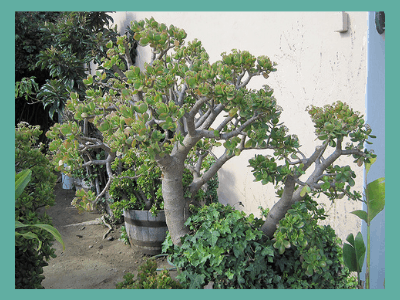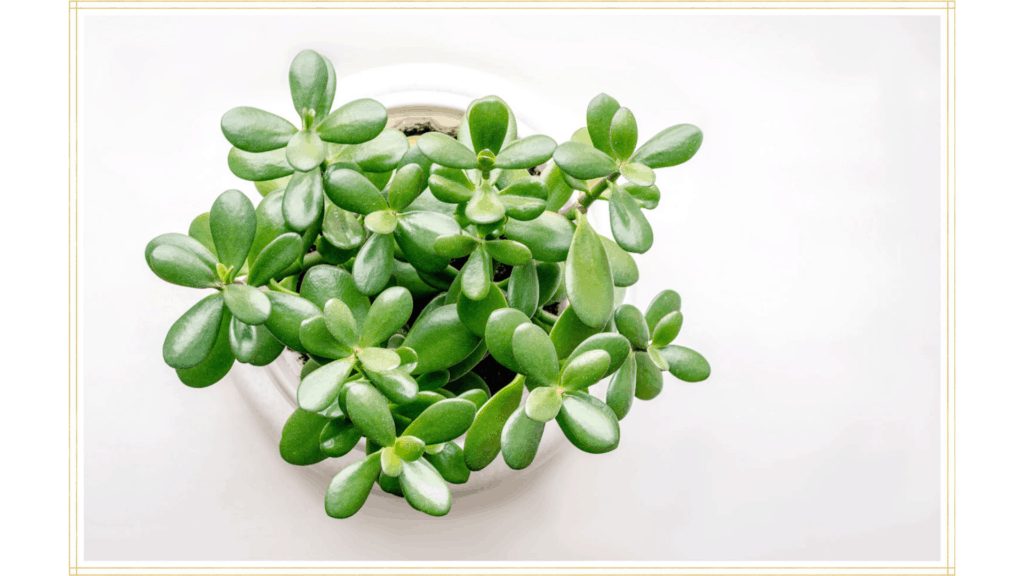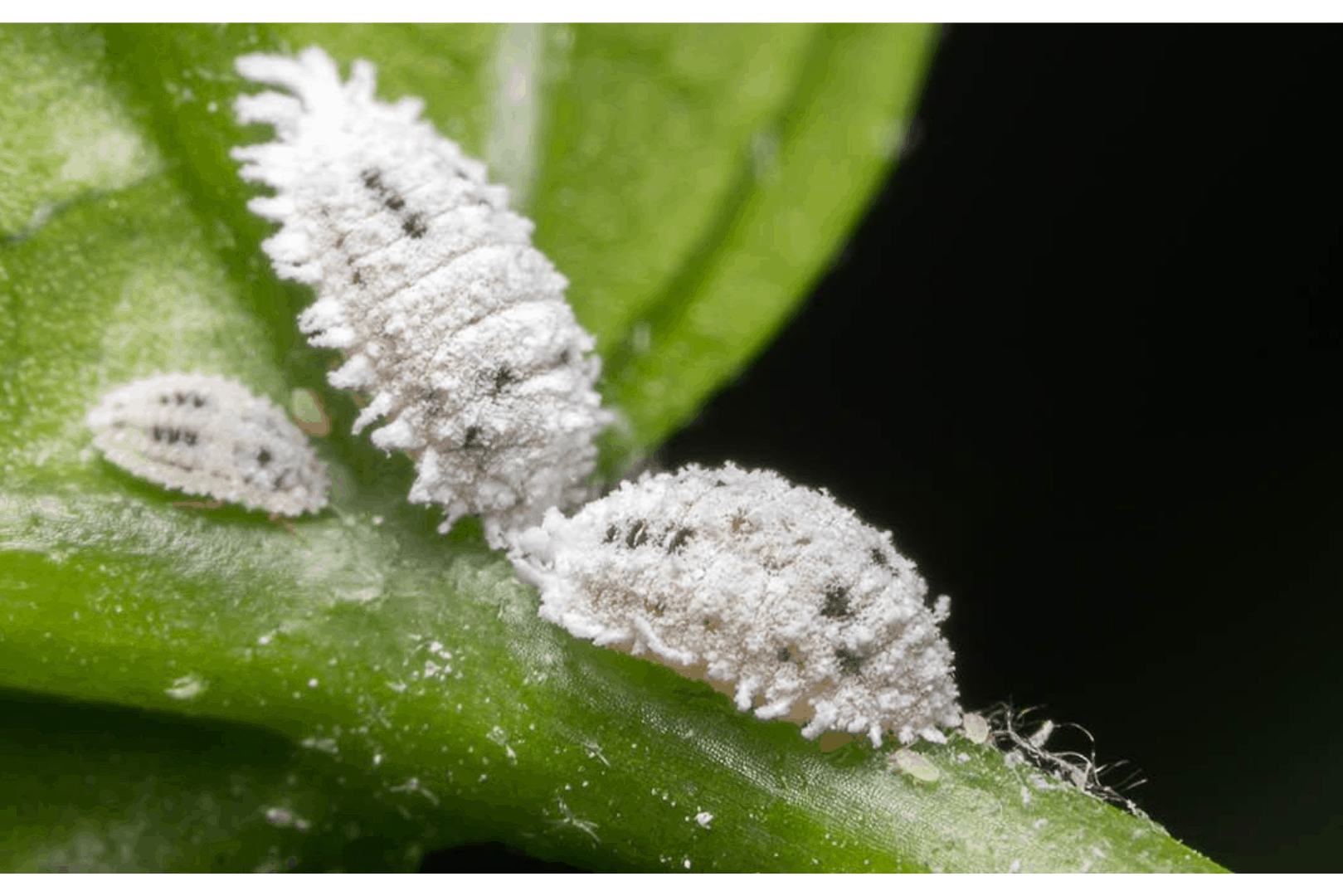Caring Jade Plant Outside? Is It Possbile?
How to care for a Jade Plant outside?
When it comes to growing Jade Plant…
…it will be different in planting it outside and inside the house.
Most of the home gardeners do not realize the cause of failures they had while growing Jade…
In fact, there are some things need to be highlighted and become the attention of gardeners…
…that have often underestimated by common beginners.
Don’t ever underestimate about how to care jade plant outdoor be
Prices pulled from the Amazon Product Advertising API on:
Product prices and availability are accurate as of the date/time indicated and are subject to change. Any price and availability information displayed on [relevant Amazon Site(s), as applicable] at the time of purchase will apply to the purchase of this product.
Let’s take a look on Maya’s story below!

Growing a plant has never been so frustrated!
I don’t know why…
I just can’t bare with my repeating failures…
….while at the same time everyone have expected a lot on my plants…
I have also been depend on plants as my main source of income…
But, if problems on the growing itself keep coming…
I’m worried I will be losing everything important to me…
Alright, Maya’s story above simply tells us the importance of knowing how to care of our plants…
….especially the one we are going to discuss here
As we know…

credit: https://youtu.be/d8NZazp1ttQ
Native to South Africa, the most common variety of jade grown in the home or garden is Crassula ovata…
commonly known as money tree or Jade Plant has become one of the favorites plant to grow!
As container plants, they grow 2-5 feet (.60 to 1.5 m.) tall.
Because jade plants are such slow growers…
…their size and shape can easily be controlled….
…by keeping them in smaller pots and performing regular pruning and shaping.
They can even be shaped easily into unique bonsai specimens.
Because their stems and leaves are quick to form new roots…
…they are a popular choice for propagation by cuttings.
They are seldom bothered by pests, need very little water, and are tolerant of poor…
…dry potting media and being root bound.
All of this applies to outdoor jade plants as well.
They are hardy in zones 10-11, but prefer hot, arid climates and…
…can be prone to rot and other fungal problems in humid climates.
Growing jade plants outside does require some patience…
…as they are slow growers, but in time they can top out to 6-10 feet tall.
Usually, though, outdoor jade plants are kept trimmed to 2- to 4-foot tall hedges or borders, or shaped into bonsai-like specimen…
…or accent plants.
In the right conditions, broken or fallen branches of outdoor jade plants will form new roots…
…allowing them to easily fill in as lush hedges and borders, and even form colonies.
However, their slow growth makes them easy to maintain the desired size and shape.
Jade in the garden will grow best in a sandy loam soil.
Quick draining soil is a must…
…as they will be prone to root and crown rot and other fungal problems in wet, slow- draining, compacted or clay soils.
Jade plants can grow in full sun to pretty dense shade.
However, 4-6 hours of direct sunlight is ideal for outdoor plants…
…and they’ll do best with a little shade from the intense afternoon sun.
Although jade plants are succulent and can tolerate drought…
…their foliage can become tinged red or wrinkled and shriveled when stressed from too little water.
Jade in the garden will benefit from a deep watering weekly or biweekly.
They will also benefit from an annual spring fertilizer for cacti and succulents.
In the right conditions, outdoor jade may form short-lived white-pink blossoms.
These flowers should be deadheaded after their very short bloom period to maintain the healthy green appearance of the plant.
Mealybugs are a common pest of jade plants…
…so jade in the garden should be checked over regularly for these pests, as well as scale and spider mites.

credit: https://www.proflowers.com/blog/jade-plant-care
What Kind of Soil Do Jade Plants Like?
Keep reading…
It’s tolerant of poor sandy soil, prefers to be root bound in a pot…
…and doesn’t need too much watering.
With minimal care, these plants can live for decades.
Only in regions where the temperatures are extreme…
…do you even have to worry about the temperature in which to keep your jade plant.
Jade plants actually need some exposure to cooler temperatures in the winter to thrive.
Hardy Zones
“The jade plant is considered hardy in which its hardiness zones are 10 and 11 with temperature ranges of 30 to 50 degrees Fahrenheit in the winter.”
U.S. Department of Agriculture
Throughout frost-free areas of the West Coast and southern states…
…the jade plant can live outdoors even in the winter.
Gardeners in the warmest USDA zones, including those in arid areas…
…such as Arizona or parts of California will also be able to grow jade plants outdoors.
They are classed as hardy in USDA zones Gardeners in USDA zones cooler than 10 are best advised to grow the plants in containers.
This enables you to move them undercover in the fall…
…before the first frosts arrive.
In more humid areas growing outside should be avoided.
This is because the plants are prone to rot or fungal disease.
Growing outdoors requires patience.
These plants are notoriously slow growing.
Eventually, if not regularly pruned they can reach up to 10 ft in height.
As well as pruning regularly you will need to remove any fallen or broken branches.
If left on the ground these can set root and form new plants.
Pot your jade plant in quick-draining soil.
Sandy or loam soil is ideal.
These plants are prone to root rotting diseases meaning that they struggle in wet or heavy soils.
Position your plants so that they can receive between 4 and 6 hours of indirect sunlight every day.
Ideally your chosen position will provide a little afternoon shade.
This helps to protect the plants from the intense heat of the afternoon sun.

Give your full attention on watering!
When you aren’t sure whether your plant has been overwatered or underwater..
..it’s crucial to feel the soil first.
An underwater plant will always have dry soil.
Underwatering occurs when there is a complete lack of water.
If your plant only shows signs of underwatering, as outlined above..
..and the soil feels dry, you should water it and monitor its response over the next 12-24 hours.
The plant will quickly recover from wilting and look much healthier if it is submerged.
Plants with both overwatering and underwatering symptoms are more likely to be overwatered.
Damage from overwatering is caused by prolonged wet conditions, but will not disappear as soon as the soil dries out.
Rather than simply watering your plant to see how it responds..
..you should carefully examine the conditions it has been growing in to determine for sure what the problem is.
Underwatering
The result of underwatering is not providing enough water..
..to meet your plant’s needs and maintain its health.
Underwatering occurs when you do not provide your plant with adequate water..
..or when excessive water is lost from the plant because of its growing conditions.
Why is this important?
Jade plants that are not receiving enough water often shed their leaves rapidly.
If the lower leaves on your plant are shriveling up and then falling off, check the soil.
If it is completely dry, water your plant thoroughly.
Water a jade plant every time the top inch of its soil is dries out.
Jade plants add leaves and shoots during the summer…
…and need more water during those months. The plant will use less water in the winter…
…but will still need a drink every now and then.
Don’t make the mistake of ignoring a slow-growing winter plant or you could lose it.
Underwatering Symptoms
In plants that are not properly hydrated, leaf edges usually brown and are dry.
In most cases, the lower leaves suffer first, becoming yellowed and curled..
..or the plant may fail to flower at all.
The plant eventually dries up and dies.
The soil should be checked for moisture at least once a week, and watered when it starts to feel dry..
..but not completely.
Check the soil moisture of outdoor potted plants daily and garden plants twice weekly.
Outdoor plants usually require more frequent watering than indoor plants.
Overwatering
The roots are effectively smothered by over-watering and the oxygen supply to the plant is cut off.
Both oxygen and water are essential for plants; overwatering results in waterlogged soil, especially in compacted or clay soils.
In waterlogged soil, the pores around soil particles, which should contain equal amounts of oxygen, are completely filled with water.
In this case, the roots and root hairs necessary for plant growth cannot absorb enough oxygen and can die.
Sour or rotten soil is typically a sign that it has been exposed to too little oxygen for too long.
What’s the bottom line?
Just as too little water is a problem, so is too much. Jade plants don’t like wet feet and are vulnerable to root rot.
Never leave your jade plant’s pot in standing water. Check your plant’s soil if its leaves turn yellow and start to drop off.
If it is damp or soggy, withhold water until the soil dries out completely.
If you notice soft sections on the jade’s trunk or branches…
…remove the plant from its pot and wash the soil away from the roots. Cut off any soft branches or roots…
…and then repot the plant in a potting mix specifically formulated for cacti.
Use a clean pot when replanting your jade in case the rot is the result of a fungal infection.
For root rot, trim the plant’s mushy roots and plant in sterile soil.
Stop watering the plant and gradually reduce the amount.
Overwatering Symptoms
Plants with overwatered roots develop soft, rotten roots as their root system drowns and begins to die.
The base of the stem may feel mushy or the potting soil may smell rotten.
The leaves begin to fall, both old and new, or they may become soft and rotten looking.
Overwatering often results in mildew, mold and other fungal growth on the soil and plant.
Ensure the drip tray beneath the pot is empty after each irrigation to minimize the risk of overwatering.
A moist top inch or two of soil is usually enough for most plants to maintain proper watering.
When you think it’s all rooted on sun light, but here’s what you should figure out!

credit: https://pottingplans.com/jade-plant-top-heavy/
Well, is it true?
Jade plants need a tremendous amount of sun to keep them growing well without getting leggy.
At a minimum, they prefer 4 to 6 hours of sunlight daily, indirect,
…yet bright light is best as too much direct light can cause sunburn on the leaves.
If your jade is losing its leaves at the beginning of winter…
…it’s probably not getting enough light.
Move your plant closer to a window…
…but keep it a few inches away from the glass.
Place your jade plant in a south-facing window if possible and your plant will grow full and bushy.
If you do not have a south-facing window…
…a window with western exposure is the second-best option.
Winter drafts are just as damaging as low light.
If you fear your window is too cold or drafty for the plant…
…supplement the light it receives with an artificial light source.
Pure white CFL bulbs work well for this purpose and last a long time.
Well, it’s not about cold or hot temperature…

credit: https://pottingplans.com/jade-plant-top-heavy/
“Jade plants will tolerate lower temperatures and even prefer the lower temperatures of about 45 to 55 F in the winter. However, most jade plants sold in the U.S. are not tolerant of temperatures below 40 F.”
Horticulturist Ron Smith of North Dakota State University
So, what is the best temperatures for Jade Plants?
Jade plants do best at temperatures between 55 and 75 degrees Fahrenheit.
Frost will kill the plant…
…but both colder and warmer temperatures can cause leaf drop.
Keep an eye on the thermometer all year…
…keeping your plant away from drafts and radiators both.
Remember, too, that window glass can magnify the sun’s rays…
…and burn your plant during the summer months.
A sudden change in temperature caused by a move will also cause leaf drop.
The leaves will grow back once your plant has adapted to its new surroundings.
To prevent this, gradually acclimate your plant to a new location by placing it there only for a few hours at a time.
Gradually increase the length of time your jade plant stays in its new location before making the switch permanently.
Cold Temperature Damage
If exposed to frost or low temperatures for too long…
…your jade may appear limp.
If this occurs, you may just need to wait and see if the plant revives.
Cut back any stems that turn black or appear rotted.
Don’t be tempted to overwater the plant to revive it…
Let the soil dry out before watering.
Bring it indoors into a room that gets good ambient sunlight.
Protection from Cold Temperatures
If you live in an area where temperatures regularly drop below 45 F…
…you should keep your jade plant in a pot and bring it indoors for the winter.
You can move it back outdoors in the spring when temperatures are regularly above 45 F.
If you live in a region where temperatures only sometimes drop too low for your jade…
…then it will probably be fine outdoors with some protection from frost…
…such as bringing it onto a covered patio, covering it with cloth, or stringing Christmas lights onto the plant.
Ups, avoid the pests around!

This is crazy.
The most common pest that attacks jade plants are mealybugs.
To detect these pests, look for cotton patches along the joint between the stem and leaves.
Scales and mealybugs can be found under the foliage or on the stem of plants.
These pests will feed off the plant’s sap…
…and eventually create an infection known as sooty mold due to the sticky substance that mealybugs secrete.
Here’s how to solve the mealybug issue and protect your jade plant…
Clean your jade plant with rubbing alcohol several times to fully get rid of the bugs.
In extreme cases, you will need to dispose of the jade plant.
Problems occur?
One of the only issues that a jade plant will face is becoming droopy.
The leaves will begin to sink towards the floor…
…meaning the jade plant is dying.
The most common factor leading to droopiness is overwatering in the winter.
Instead of fully watering your jade plant during colder weather…
…mist your plant with a spray bottle.
During the summertime when fully watering the plant…
…make sure the jade is placed in a drainage pot…
…so that excess water can escape and the roots do not drown.
Jade plants are vulnerable to infestations of mealy bugs and scale insect.
Mealies and scale make jade leaves sticky and can encourage the growth of molds.
So,
Treat any pests you find daily until they are gone!
Learn more about mealy bugs here!
Make sure you won’t use any leaf shine products!
Here’s the deal…
Never use leaf shine products on jade plants…
…as it will cause all their leaves to turn yellow and fall off.
Household chemicals and cleaners have a similar effect if they touch the leaves.
Jade plant leaves shine naturally…
…if they are dust free and the plant is healthy.
If dust dulls the shine on your plant…
…simply wipe the leaves gently with a soft cloth.
Let’s sum all up!
Alright, so how to care for a Jade Plant outside?
Here some important things that I explain above…
First thing first…
Jade in the garden will grow best in a sandy loam soil.
Quick draining soil is a must…
….as they will be prone to root and crown rot and other fungal problems in wet, slow- draining, compacted or clay soils.
Jade plants can grow in full sun to pretty dense shade.
However, 4-6 hours of direct sunlight is ideal for outdoor plants and they’ll do best with a little shade from the intense afternoon sun.
Although jade plants are succulent and can tolerate drought, their foliage can become tinged red or wrinkled and shriveled…
…when stressed from too little water.
Jade in the garden will benefit from a deep watering weekly or biweekly.
They will also benefit from an annual spring fertilizer for cacti and succulents.
In the right conditions, outdoor jade may form short-lived white-pink blossoms.
These flowers should be deadheaded after their very short bloom period to maintain the healthy, green appearance of the plant.
Last but not least…
Mealybugs are a common pest of jade plants…
…so jade in the garden should be checked over regularly for these pests, as well as scale and spider mites.
Prices pulled from the Amazon Product Advertising API on:
Product prices and availability are accurate as of the date/time indicated and are subject to change. Any price and availability information displayed on [relevant Amazon Site(s), as applicable] at the time of purchase will apply to the purchase of this product.
Conclusions
I hope this post is able in answering: How to care for a Jade Plant outside?
Now I’d like to know what you have to say.
You are already know How to care for a Jade Plant outside? in the most easiest and fastest ways….
…that I’m sure there are not many people aware of it…
So, is taking care of Jade Plant outside difficult?
Um, not really!
As now you, yourself, are able to do it, right?
If you still have any questions on our topic of How to care for a Jade Plant outside?
…or even you need to know a more detailed steps to do in dealing with it….
…feel free to contact me!



